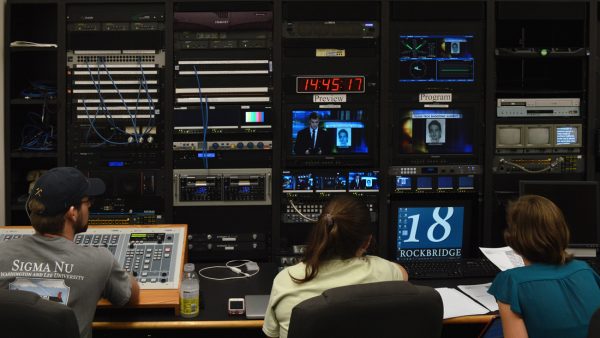Combat and controversy: a review of the latest live-action Disney remake
“Mulan” might be worth a watch on its own merits, but it’s certainly not worth the $30 tickets
The Student Association for International Learning sponsored the streaming of the live action Mulan movie. SAIL reimbursed homegroups for the $30 purchase.
September 22, 2020
After weathering controversy for months, Disney’s live-action “Mulan” premiered Sept. 4 on Disney+. “Mulan” might be worth a watch on its own merits, but it’s certainly not worth the $30 tickets.
Both the animated and live-action versions of Disney’s “Mulan” hold up better when they aren’t compared to each other. The gap between the animated comedy-adventure musical and this year’s stoic fantasy war-story is too wide to be connected by the underlying plot.
Hua Mulan is not allowed to fight for her country as a girl, but she secretly takes her injured father’s place in the Chinese Imperial Army when the troops are called to stop an invasion. After honing her special skills, saving her battalion and winning the respect of her fellow soldiers, Mulan’s identity is revealed. This perceived betrayal of China lands Mulan in hot water when no one will believe her claims that the Emperor is in danger.
This version of Mulan’s story has a slightly updated plot, which heightens the dramatic tension but requires some suspension of reality to really enjoy.
Mulan’s journey is a war movie which takes a major tonal departure from the animated film. It is dead serious for almost the entirety of the 2-hour runtime. That’s not inherently bad, but the film overall lacks comedic relief or an emotional core to elevate it beyond average.
This movie has more battle scenes and less banter than the animated version, so it’s a relief that the fights are so well-filmed and acted. The flamboyant fight scenes and stunning choreography keep your eye on the action. The combat is sometimes over-the-top, but it makes the movie far more enjoyable.
The characters are engaging, but few of them have real heart. Liu Yifei’s Mulan is serene and determined. Another standout is the Witch, a character new to the live-action version. Her name is never mentioned in the movie, but she possesses ferocious dignity and a raging grudge against the men who keep her down.
Mulan’s army buddies and mentor are flat and unmemorable, with the exceptions of Mulan’s barely-love interest Honghui and comedic-relief friend Cricket. Honghui and Mulan share a rushed romance plotline, but there aren’t many subplots in the whole movie. The dialogue includes a few stunning one-liners but is held back by awkward phrasing overall.
The gorgeous scenery and cinematography are this movie’s best features. “Mulan” was filmed in both China and New Zealand, which provide beautiful fields, canyons and mountains. Sweeping shots and bright colors make for an enchanting viewing experience. Costuming and set design are also exquisite and the military uniforms come off especially well.
“Mulan’s” central theme leans into the unfairness of the patriarchy. The dynamic between Mulan and the Witch evolves as two powerful women on opposite sides of the war struggle against repression of their natural gifts.
Mulan’s unusual powers give her an edge in combat and allow some of the over-the-top fight scenes. The people around her urge her to repress her “qi” — the life energy that, in the movie, powers her extraordinary fighting skills — so she can fit into her allotted role in society as a woman. Her evolution is both moving and relatable. Mulan tries to honor her family in battle and reconcile her lies about her own identity with her principles.
But logically speaking, qi being reserved for men is a strange distortion of the traditional Chinese concept that qi is the life energy in everyone. It also undermines the 1998 animated Mulan’s emphasis on hard work to give Mulan a spiritually boosted advantage over other soldiers in her training.
I am not qualified to judge “Mulan’s” cultural accuracy myself, but online commenters have spotted many mistakes and bad judgment calls. The earlier qi issue is a major issue that’s been noted. Chinese audiences have given this movie mixed reviews and many are not thrilled with its cultural or historical accuracy.
I couldn’t end this article without mentioning the multiple controversies surrounding this movie. Mulan’s actress Liu Yifei spoke out against Hong Kong pro-democracy protests last year, standing in support of the Chinese Communist Party. This created an anti-Mulan and anti-Disney backlash, coupled with a boycott movement.
Disney also filmed scenery in Xinjiang, the province where China has reportedly been undertaking a campaign of imprisonment, “reeducation” and cultural genocide against Uighur Muslims. The company thanked local Chinese authorities, including some film authorities that were involved in government propaganda.
Disney bet on Chinese audiences and seems to have lost. As of Sept. 12, the Chinese government allegedly ordered major Chinese news outlets to downplay their “Mulan” coverage. Controversy and shaky scores hold this film back.
My overall rating of Disney’s live-action “Mulan” is a 6/10. It might be worth a try, but it’s not groundbreaking or necessary viewing.













